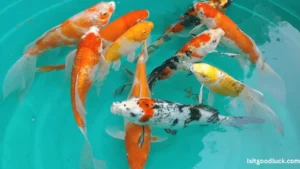Welcome to our exploration of German traditions and superstitions associated with good luck. In this article, we will delve into the fascinating customs and phrases that Germans use to bring good fortune into their lives. From unique New Year’s Eve traditions to special greetings and gestures, you’ll gain insight into the rich cultural heritage of Germany. So, let’s dive in and discover what Germans say for good luck!
Contents
- 1 German New Year’s Eve Traditions
- 2 German New Year’s Eve Food and Drinks
- 3 German New Year’s Eve Customs: Bleigiessen and “Dinner for One”
- 4 German New Year’s Greetings and Wishes
- 5 Conclusion
- 6 FAQ
- 6.1 What do Germans say for good luck?
- 6.2 What are some German traditions for good luck on New Year’s Eve?
- 6.3 What kind of food and drinks do Germans have on New Year’s Eve?
- 6.4 What is Bleigiessen and why do Germans practice it?
- 6.5 What are common New Year’s greetings and wishes in German culture?
- 6.6 What are some common hand gestures in German culture?
- 7 Source Links
Key Takeaways:
- German New Year’s Eve, known as “Silvester,” is filled with traditions and customs believed to bring good luck.
- Eating fish carefully and keeping a carp scale in the wallet is thought to guarantee wealth for the coming year.
- Germans make resolutions for the New Year, hoping for an extraordinary year ahead.
- Specific food and drinks, such as carp and “Bowle” punch, are enjoyed on New Year’s Eve.
- Germans have unique customs like “Bleigiessen” and the tradition of watching “Dinner for One” on New Year’s Eve.
German New Year’s Eve Traditions
German New Year’s Eve, or Silvester, is celebrated with a variety of traditions and customs that are believed to bring good luck for the coming year. One of the most prominent traditions revolves around fish, particularly carp. Germans believe that eating fish on New Year’s Eve ensures a year of abundance and prosperity. Some even go as far as to carefully eat every piece of the fish, making sure not to leave any bones behind, as it is believed that leaving fish bones on the plate brings bad luck.
Another popular German New Year’s Eve tradition is making resolutions. People reflect on the past year and set goals or resolutions for the year ahead. Whether it’s to eat healthier, exercise more, learn a new skill, or spend more time with loved ones, these resolutions embody the hope and optimism for an extraordinary year ahead. It’s common for Germans to share their resolutions with friends and family, holding each other accountable and providing support throughout the year.
“Eating fish on New Year’s Eve ensures a year of abundance and prosperity”
Furthermore, Germans embrace the tradition of watching a classic British comedy sketch called “Dinner for One” on New Year’s Eve. This sketch has become a beloved tradition in Germany, with television networks airing it every year since the 1970s. The sketch tells the story of Miss Sophie’s 90th birthday celebration, where her butler serves as the guest for each of her deceased friends. It has become the most frequently repeated TV program in Germany and is enjoyed by millions as they bid farewell to the old year and welcome the new.
| Tradition | Description |
|---|---|
| Fish | Eating fish, particularly carp, is believed to bring abundance and prosperity for the coming year. |
| Resolutions | Germans make resolutions to set goals for the year ahead, focusing on personal growth and improvement. |
| “Dinner for One” | Germans enjoy watching this British comedy sketch as a beloved tradition on New Year’s Eve. |
German New Year’s Eve traditions are deeply rooted in the country’s rich culture and beliefs. From enjoying fish for good luck to making resolutions and embracing classic TV programs, Germans welcome the New Year with hope and optimism. These traditions provide a glimpse into the German culture and create a sense of unity as people come together to celebrate and bid farewell to the old year while looking forward to the possibilities of the new one.
German New Year’s Eve Food and Drinks
When it comes to celebrating New Year’s Eve in Germany, food and drinks play a significant role. Germans have specific culinary traditions that are believed to bring good luck and prosperity for the coming year. One popular dish on New Year’s Eve is carp. Germans believe that consuming carp, especially its head, brings good fortune and financial success. It is common to find carp prepared in various ways, such as baked, fried, or even pickled.
In addition to carp, Germans also enjoy a refreshing beverage called “Bowle.” Bowle is a type of punch made from a combination of wine, champagne, fruit, and herbs. It is often served with colorful fruit slices floating in the bowl, adding an aesthetic touch to the celebration. This fruity and sparkling drink is a favorite among Germans during the New Year’s festivities.
Aside from specific dishes, Germans also have a tradition of having meals that can be eaten over several hours. Fondue and raclette are popular choices for this type of dining experience. Fondue involves dipping pieces of bread, vegetables, and meat into a pot of melted cheese or hot oil, creating a social and interactive dining experience. Raclette, on the other hand, consists of grilling various meats and vegetables while melting cheese on top. These meals encourage leisurely eating and spending time with loved ones, adding to the festive atmosphere of New Year’s Eve.
| Dish | Description |
|---|---|
| Carp | Believed to bring good luck and financial success |
| Bowle | A fruity and sparkling punch made with wine, champagne, fruit, and herbs |
| Fondue | Interactive dining experience involving dipping bread, vegetables, and meat into melted cheese or hot oil |
| Raclette | Grilling various meats and vegetables while melting cheese on top |
German New Year’s Eve Customs: Bleigiessen and “Dinner for One”
German New Year’s Eve customs are steeped in tradition and superstition. Two unique customs that are widely practiced are Bleigiessen and watching “Dinner for One.” These customs hold special significance for Germans and add a touch of charm and excitement to their New Year’s Eve celebrations.
Bleigiessen: Predicting the Future with Molten Metal
Bleigiessen is a popular German tradition where small pieces of lead or tin are melted and then dropped into cold water. The resulting shapes are believed to predict what the coming year holds. Each shape has its own meaning, and Germans eagerly interpret these predictions to gain insight into their future. For example, a heart shape may signify love and romance, while a key shape may symbolize new opportunities or unlocking success. It’s a fun and interactive way for Germans to ring in the New Year and reflect on the possibilities that lie ahead.
“Dinner for One”: A Timeless Comedy Sketch
A beloved New Year’s Eve custom in Germany is watching “Dinner for One,” a British comedy sketch that has become a national tradition. This sketch features a fictional 90th birthday celebration and showcases the comedic talent of British actors Freddie Frinton and May Warden. Although it is unknown in the English-speaking world, “Dinner for One” has gained immense popularity in Germany, and it is now the most frequently repeated television program in the country. On New Year’s Eve, Germans gather around the television to watch this classic sketch and laugh along with the hilarious antics of Miss Sophie and her butler James.
| Bleigiessen Shapes | Meaning |
|---|---|
| Heart | Love and romance |
| Key | New opportunities, success |
| Anchor | Stability, groundedness |
| Tree | Growth, prosperity |
| Ring | Commitment, marriage |
These customs, Bleigiessen and watching “Dinner for One,” add a touch of whimsy and tradition to German New Year’s Eve celebrations. Whether it’s predicting the future with molten metal or enjoying a timeless comedy sketch, these customs bring people together and create lasting memories. So, embrace the German spirit and try incorporating these customs into your own New Year’s Eve celebrations for a fun and unique experience!
German New Year’s Greetings and Wishes
As the clock strikes midnight on New Year’s Eve in Germany, people exchange heartfelt greetings and wishes for the coming year. It is a time of celebration, joy, and optimism as friends and family come together to welcome the fresh start. Here are some common German expressions for good luck and well wishes:
- Frohes neues Jahr – This translates to “Happy New Year” and is the most commonly used greeting during this festive time.
- Prosit Neujahr – Literally meaning “Cheers to the New Year,” this phrase is often accompanied by clinking glasses and toasting with champagne or a traditional German drink.
- Guten Rutsch – This phrase wishes someone a “good slide” into the New Year, symbolizing a smooth transition and a positive journey forward.
- Alles Gute für das neue Jahr – This expression means “All the best for the New Year” and is a warm and inclusive wish for happiness, success, and good health in the upcoming year.
Along with these greetings, it is customary for Germans to exchange kisses and hugs at midnight. This affectionate gesture symbolizes love, unity, and the strengthening of relationships. Additionally, fireworks light up the night sky, illuminating the joy and excitement of the moment.

Table: Common German Hand Gestures
| Gestures | Meaning |
|---|---|
| Handshake | Greeting and farewell |
| Cheek kisses | Greeting between friends and family |
| Pointing | Indicating something or someone |
| Waiting | Hold on or wait a moment |
| Crossed fingers | Wishing good luck |
By familiarizing yourself with these common hand gestures, you can enhance your cultural understanding and effectively engage with German speakers. Remember to adapt your gestures and body language to the specific context and individuals you are interacting with, as cultural norms may vary.
Conclusion
German traditions and customs for good luck on New Year’s Eve are deeply rooted in their beliefs and superstitions. These practices offer a fascinating glimpse into the German culture and can enhance your cultural interactions with Germans. From avoiding fish bones to enjoying traditional TV programs, each tradition has its own significance. By understanding and appreciating these customs, you can truly immerse yourself in the rich cultural heritage of Germany.
On New Year’s Eve, Germans believe that eating fish carefully and keeping a carp scale in their wallet will bring wealth for the coming year. They also make resolutions, hoping for an extraordinary year ahead. Carp is a staple in German New Year’s Eve meals, along with delicious punch known as “Bowle” and meals like fondue or raclette that can be enjoyed over several hours.
Unique customs like Bleigiessen, where lead or tin is melted to predict the upcoming year, and the tradition of watching “Dinner for One,” the most frequently repeated TV program in Germany, add a touch of mystique to the celebrations. German New Year’s greetings like “Frohes neues Jahr” (Happy New Year) and the tradition of lighting fireworks to celebrate at midnight further add to the festive atmosphere.
German culture also has its own set of hand gestures for greetings, pointing, waiting, and wishing good luck. Handshakes, hugs, and cheek kisses are common greetings, reflecting the warmth and friendliness of the German people. Understanding and using these gestures can enhance your communication and create deeper connections with Germans.
FAQ
What do Germans say for good luck?
Germans believe in saying “Frohes neues Jahr” (Happy New Year) to wish good luck for the upcoming year.
What are some German traditions for good luck on New Year’s Eve?
Germans have various traditions for good luck, including eating carp, melting lead to predict the future, and watching the TV program “Dinner for One.”
What kind of food and drinks do Germans have on New Year’s Eve?
Germans often eat carp and enjoy punch, fondue, or raclette. These meals can be eaten over several hours.
What is Bleigiessen and why do Germans practice it?
Bleigiessen is the practice of melting lead or tin to predict the upcoming year. Germans believe that the resulting shape can reveal insights into the future.
What are common New Year’s greetings and wishes in German culture?
Germans commonly say “Frohes neues Jahr” (Happy New Year) and kiss their loved ones at midnight. They also light fireworks to celebrate and connect with family and friends.
What are some common hand gestures in German culture?
Germans often use handshakes, hugs, and cheek kisses as greetings. They also have gestures for pointing, waiting, and wishing good luck.





